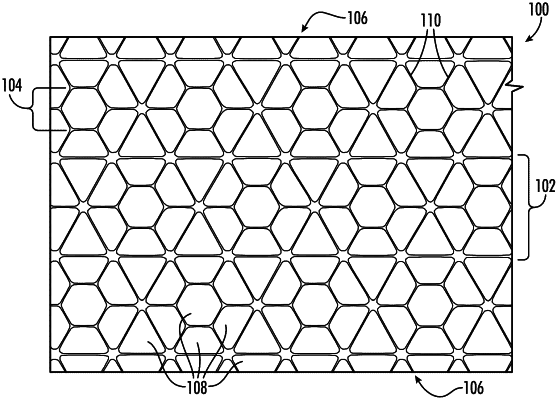| CPC E02D 17/202 (2013.01) [E02D 3/00 (2013.01); E02D 2300/0084 (2013.01)] | 17 Claims |

|
1. A geogrid system for improving substrate interactions within a geotechnical environment, comprising:
a horizontal multilayer mechanically stabilizing geogrid, comprising:
(i) a patterned structure of engineered discontinuities comprising non-continuous ribs that terminate at secondary nodes, and primary nodes that form a strong axis, wherein the non-continuous ribs and the strong axis enhance substrate compaction and increase out-of-planar stiffness;
(ii) a core layer comprising a void-containing compressible cellular layer that increases aspect ratio and surface area of the horizontal multilayer mechanically stabilizing geogrid, and wherein the aspect ratio of the horizontal mechanically stabilizing geogrid is larger at the primary nodes than at the secondary nodes; and
(iii) a top and bottom surface layer comprising a layer of polymeric material.
|